Get free scan and check if your device is infected.
Remove it nowTo use full-featured product, you have to purchase a license for Combo Cleaner. Seven days free trial available. Combo Cleaner is owned and operated by RCS LT, the parent company of PCRisk.com.
What kind of page is bitdefender[.]top?
We have analyzed bitdefender[.]top and discovered that it is a deceptive web page. The purpose of bitdefender[.]top is to lure visitors into accepting its notifications. Typically, users open such pages accidentally. It is highly advisable to avoid visiting websites like bitdefender[.]top and never permit them to send notifications.
![bitdefender[.]top ads](/images/stories/screenshots202409/bitdefender-top-ads-main.jpg)
Bitdefender[.]top in detail
Bitdefender[.]top is a misleading page that has nothing to do with Bitdefender, a cybersecurity technology company. This page presents an image of a robot along with an instruction to click "Allow" to prove that you are not a robot. Bitdefender[.]top suggests that clicking "Allow" is required to complete a CAPTCHA.
However, there is no CAPTCHA on bitdefender[.]top, and clicking allow (an option presented by a browser) grants the page permission to show notifications. If allowed, bitdefender[.]top sends fake virus warnings and similar notifications. These notifications claim that a computer is infected and urge users to act immediately. They can also contain other deceptive messages.
Notifications delivered by bitdefender[.]top can lead users to web pages hosting malicious software or other unwanted programs. Also, they can promote technical support scams, phishing sites, fake lotteries, giveaways, and other fraudulent schemes. Users may be tricked into executing malware on their computers
Also, users may unknowingly send money to scammers or provide them sensitive information (e.g., credit card details, passwords, social security numbers, ID card information). Either way, notifications from websites like bitdefender[.]top cannot be trusted and permissions granted to such pages should be revoked.
| Name | Ads by bitdefender.top |
| Threat Type | Push notifications ads, Unwanted ads, Pop-up ads |
| Detection Names | Combo Cleaner (Phishing), CyRadar (Malicious), Fortinet (Phishing), G-Data (Phishing), (Trustwave) Phishing, Full List Of Detections (VirusTotal) |
| Serving IP Address | 5.8.63.186 |
| Symptoms | Seeing advertisements not originating from the sites you are browsing. Intrusive pop-up ads. Decreased Internet browsing speed. |
| Distribution Methods | Deceptive pop-up ads, false claims within visited websites, unwanted applications (adware) |
| Damage | Decreased computer performance, browser tracking - privacy issues, possible additional malware infections. |
| Malware Removal (Windows) |
To eliminate possible malware infections, scan your computer with legitimate antivirus software. Our security researchers recommend using Combo Cleaner. Download Combo CleanerTo use full-featured product, you have to purchase a license for Combo Cleaner. 7 days free trial available. Combo Cleaner is owned and operated by RCS LT, the parent company of PCRisk.com. |
More about similar pages
Users might come across sites like bitdefender[.]top while visiting torrent sites, illegal streaming platforms, or other pages that use unreliable advertising networks. Dubious ads, pop-ups, and similar content on untrustworthy sites can also take users to such sites. Sometimes, phishing emails and adware-generated ads are used as a lure.
Either way, users do not visit websites like bitdefender[.]top on purpose. Some examples of similar pages are ourdoucki[.]net, milodan[.]com, and aoudadsclub[.]org.
How did bitdefender[.]top gain permission to deliver spam notifications?
Bitdefender[.]top cannot send notifications without permission, which is granted by clicking "Allow" or a similar option provided by a web browser while on the page. As a result, bitdefender[.]top can send notifications because it has been granted permission to do so.
How to prevent deceptive sites from delivering spam notifications?
If a questionable website requests permission to send notifications, select options like "Block", "Block Notifications", or "Deny". Be cautious of any site that insists you need to click "Allow" to verify your age, watch a video, download a file, etc., as these instructions are deceitful.
If you are receiving unwanted notifications, we recommend running a scan with Combo Cleaner Antivirus for Windows to automatically eliminate them.
Appearance of bitdefender[.]top website (GIF):
![bitdefender[.]top website appearance (GIF)](/images/stories/screenshots202409/bitdefender-top-ads-appearance.gif)
Deceptive notification from bitdefender[.]top:
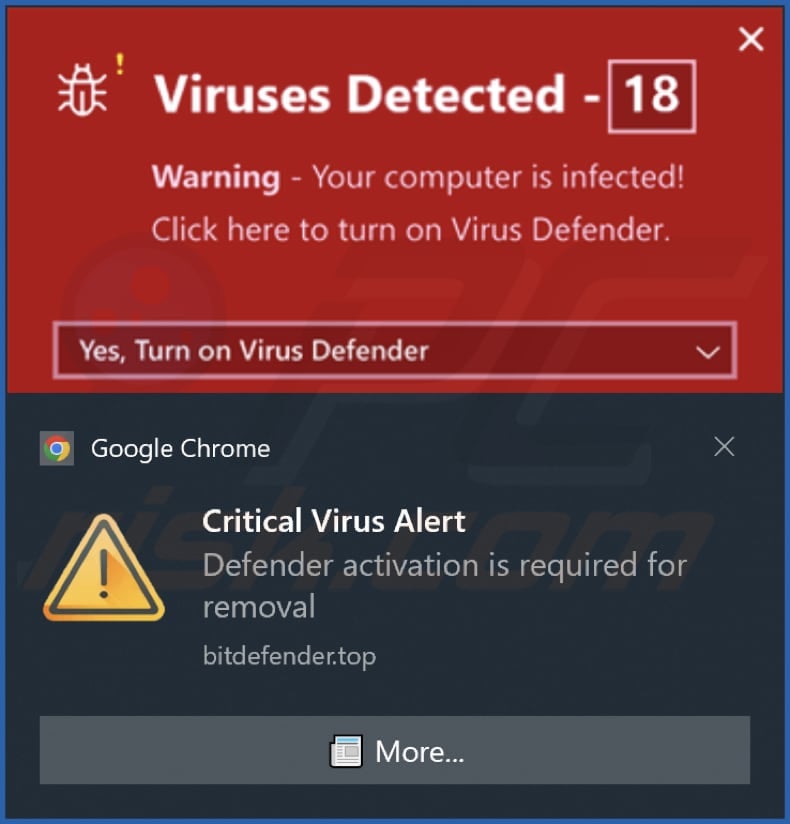
Instant automatic malware removal:
Manual threat removal might be a lengthy and complicated process that requires advanced IT skills. Combo Cleaner is a professional automatic malware removal tool that is recommended to get rid of malware. Download it by clicking the button below:
DOWNLOAD Combo CleanerBy downloading any software listed on this website you agree to our Privacy Policy and Terms of Use. To use full-featured product, you have to purchase a license for Combo Cleaner. 7 days free trial available. Combo Cleaner is owned and operated by RCS LT, the parent company of PCRisk.com.
Quick menu:
- What is Ads by bitdefender.top?
- STEP 1. Remove spam notifications from Google Chrome
- STEP 2. Remove spam notifications from Google Chrome (Android)
- STEP 3. Remove spam notifications from Mozilla Firefox
- STEP 4. Remove spam notifications from Microsoft Edge
- STEP 5. Remove spam notifications from Safari (macOS)
Disable unwanted browser notifications:
Video showing how to disable web browser notifications:
 Remove spam notifications from Google Chrome:
Remove spam notifications from Google Chrome:
Click the Menu button (three dots) on the right upper corner of the screen and select "Settings". In the opened window select "Privacy and security", then click on "Site Settings" and choose "Notifications".
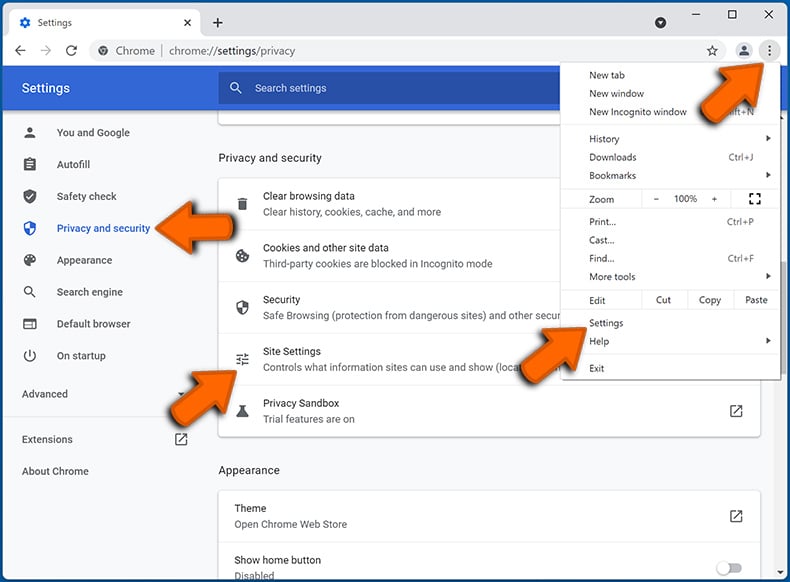
In the "Allowed to send notifications" list search for websites that you want to stop receiving notifications from. Click on the three dots icon near the website URL and click "Block" or "Remove" (if you click "Remove" and visit the malicious site once more, it will ask to enable notifications again).
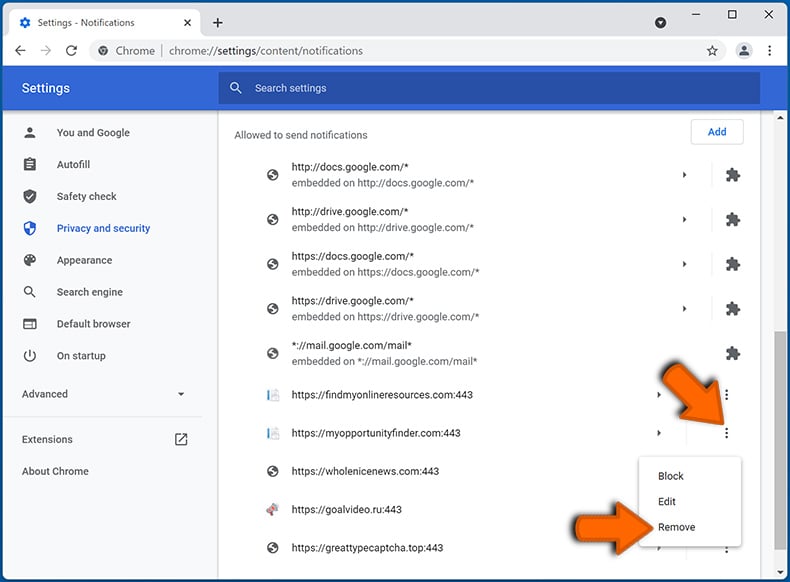
 Remove spam notifications from Google Chrome (Android):
Remove spam notifications from Google Chrome (Android):
Tap the Menu button (three dots) on the right upper corner of the screen and select "Settings". Scroll down, tap on "Site settings" and then "Notifications".
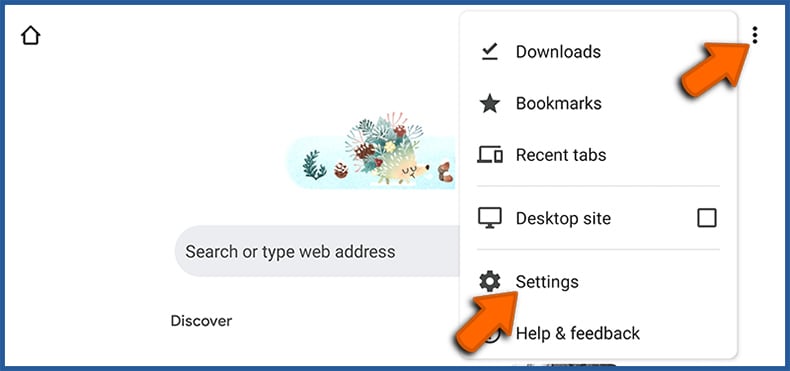
In the opened window, locate all suspicious URLs and tap on them one-by-one. Once the pop-up shows up, select either "Block" or "Remove" (if you tap "Remove" and visit the malicious site once more, it will ask to enable notifications again).
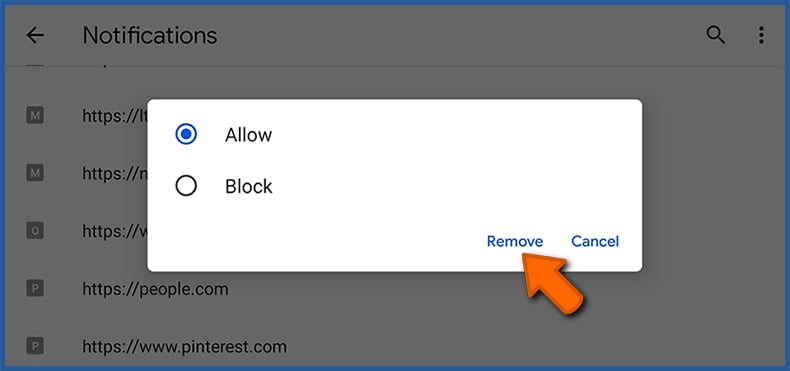
 Remove spam notifications from Mozilla Firefox:
Remove spam notifications from Mozilla Firefox:
Click the Menu button (three bars) on the right upper corner of the screen. Select "Settings" and click on "Privacy & Security" in the toolbar on the left hand side of the screen. Scroll down to the "Permissions" section and click the "Settings" button next to "Notifications".
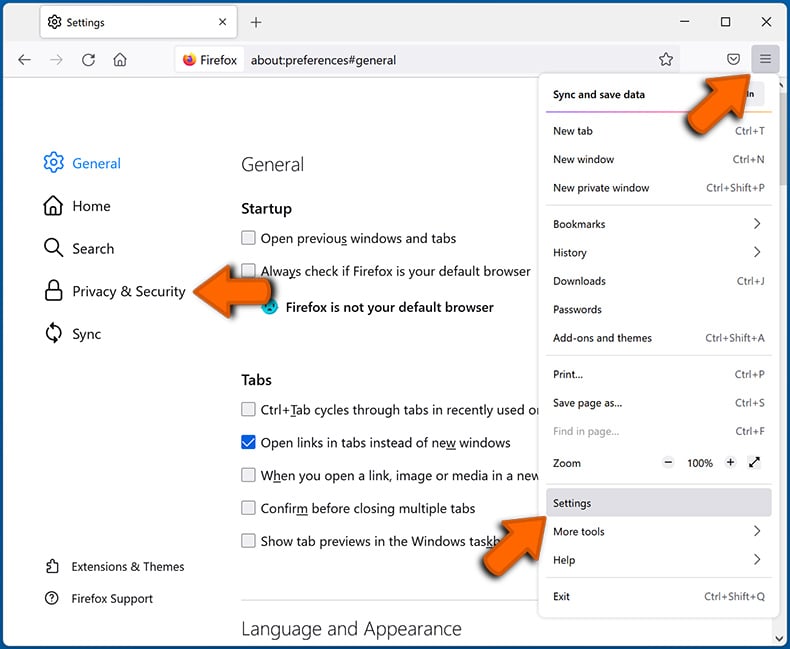
In the opened window, locate all suspicious URLs and block them using the drop-down menu or either remove them by clicking "Remove Website" at the bottom of the window (if you click "Remove Website" and visit the malicious site once more, it will ask to enable notifications again).
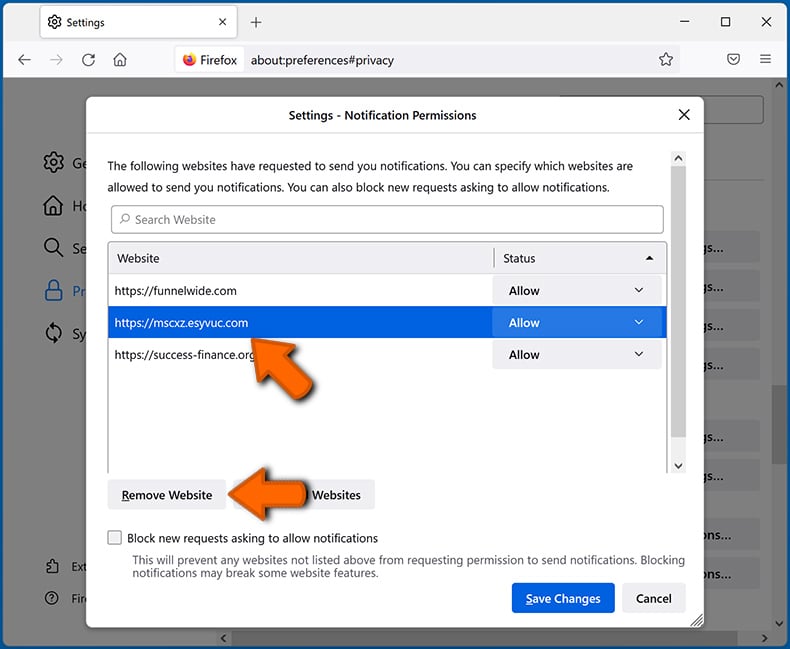
 Remove spam notifications from Microsoft Edge:
Remove spam notifications from Microsoft Edge:
Click the menu button (three dots) on the right upper corner of the Edge window and select "Settings". Click on "Cookies and site permissions" in the toolbar on the left hand side of the screen and select "Notifications".
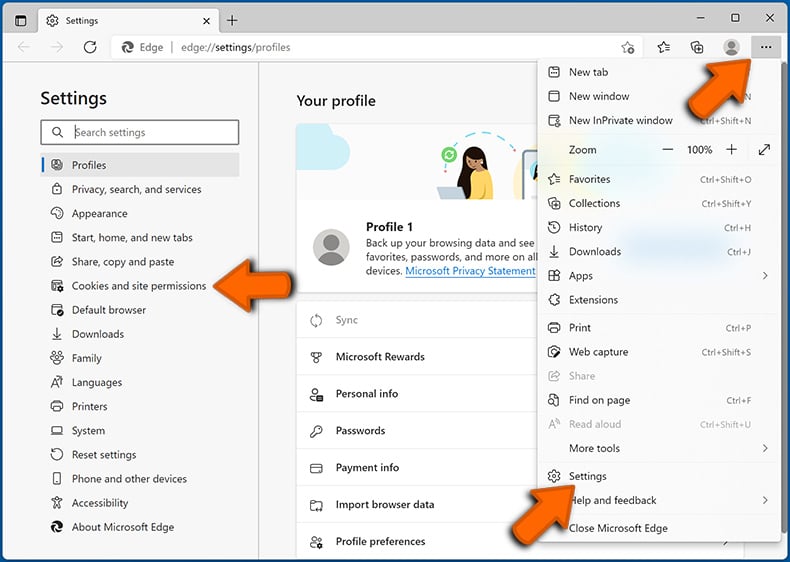
Click three dots on the right hand side of each suspicious URL under "Allow" section and click "Block" or "Remove" (if you click "Remove" and visit the malicious site once more, it will ask to enable notifications again).
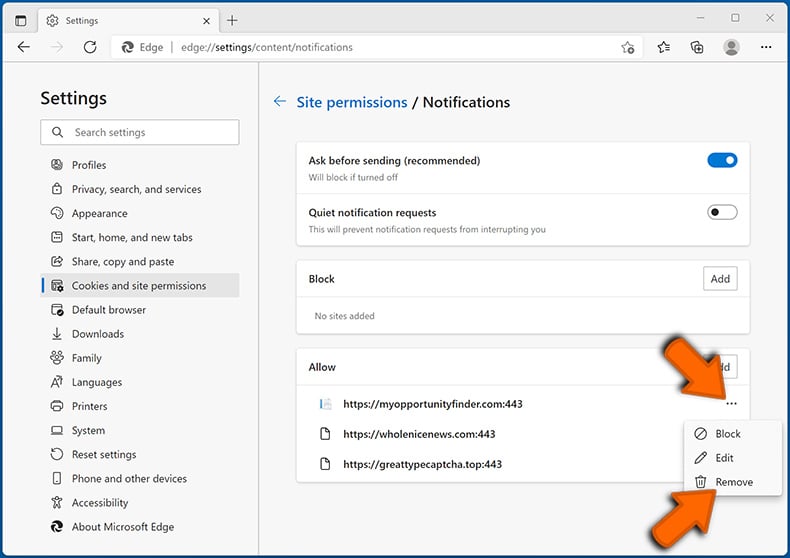
 Remove spam notifications from Safari (macOS):
Remove spam notifications from Safari (macOS):
Click "Safari" button on the left upper corner of the screen and select "Preferences...". Select the "Websites" tab and then select "Notifications" section on the left pane.
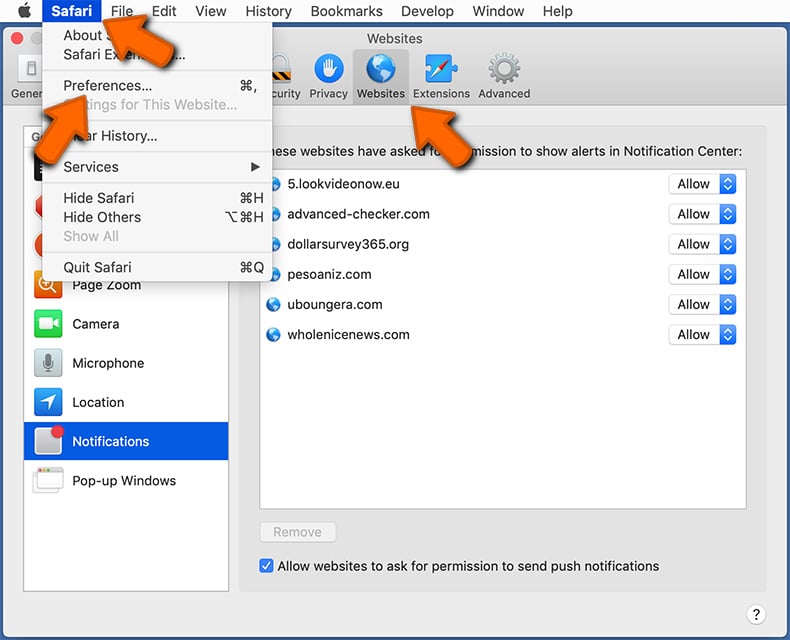
Check for suspicious URLs and apply the "Deny" option using the drop-down menu or either remove them by clicking "Remove" at the bottom of the window (if you click "Remove" and visit the malicious site once more, it will ask to enable notifications again)
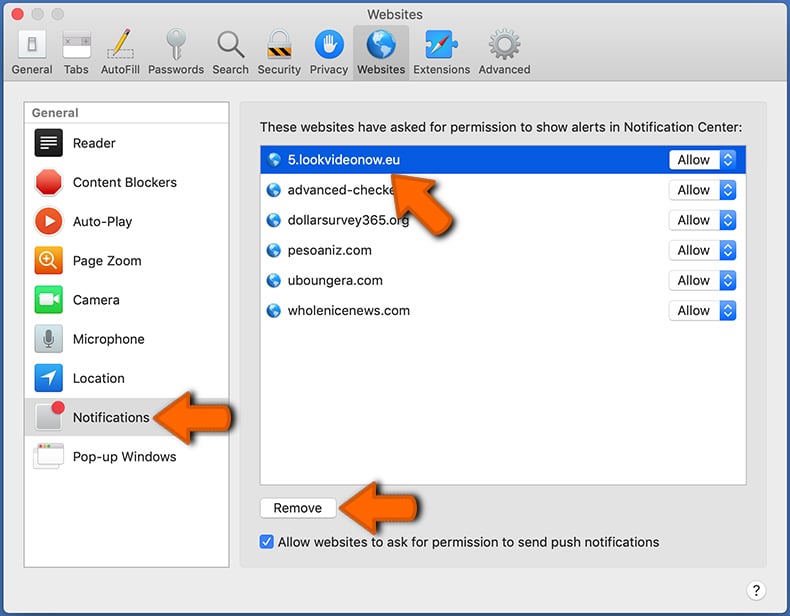
How to avoid browser notification spam?
Internet users should be very skeptical when being asked to allow notifications. While this is a useful feature that allows you to receive timely news from websites you like, deceptive marketers frequently abuse it.
Only allow notifications from websites that you fully trust. For added security - use an anti-malware application with a real-time web browsing monitor to block shady websites that tries to trick you into allowing spam notifications. We recommend using Combo Cleaner Antivirus for Windows.
Frequently Asked Questions (FAQ)
Why am I seeing ads (browser notifications) delivered by bitdefender[.]top in the right lower corner of my desktop?
Websites cannot send you notifications unless you give them permission. It means that at some point, you likely visited bitdefender[.]top and accepted its notifications by clicking "Allow" or a similar option.
I have clicked on notification ads, is my computer infected?
Notifications from web pages cannot inject malware. Nevertheless, sites like bitdefender[.]top can send notifications designed to open malicious websites.
Is bitdefender[.]top a virus?
Websites like bitdefender[.]top are not viruses. Most of them promote, scams, potentially harmful applications, and other unreliable websites.
Will Combo Cleaner remove bitdefender[.]top ads automatically or manual steps are still required?
Yes, Combo Cleaner will scan your computer and remove permissions granted to bitdefender[.]top. It will also block further access to bitdefender[.]top. No additional steps will be required.
Share:

Tomas Meskauskas
Expert security researcher, professional malware analyst
I am passionate about computer security and technology. I have an experience of over 10 years working in various companies related to computer technical issue solving and Internet security. I have been working as an author and editor for pcrisk.com since 2010. Follow me on Twitter and LinkedIn to stay informed about the latest online security threats.
PCrisk security portal is brought by a company RCS LT.
Joined forces of security researchers help educate computer users about the latest online security threats. More information about the company RCS LT.
Our malware removal guides are free. However, if you want to support us you can send us a donation.
DonatePCrisk security portal is brought by a company RCS LT.
Joined forces of security researchers help educate computer users about the latest online security threats. More information about the company RCS LT.
Our malware removal guides are free. However, if you want to support us you can send us a donation.
Donate
▼ Show Discussion